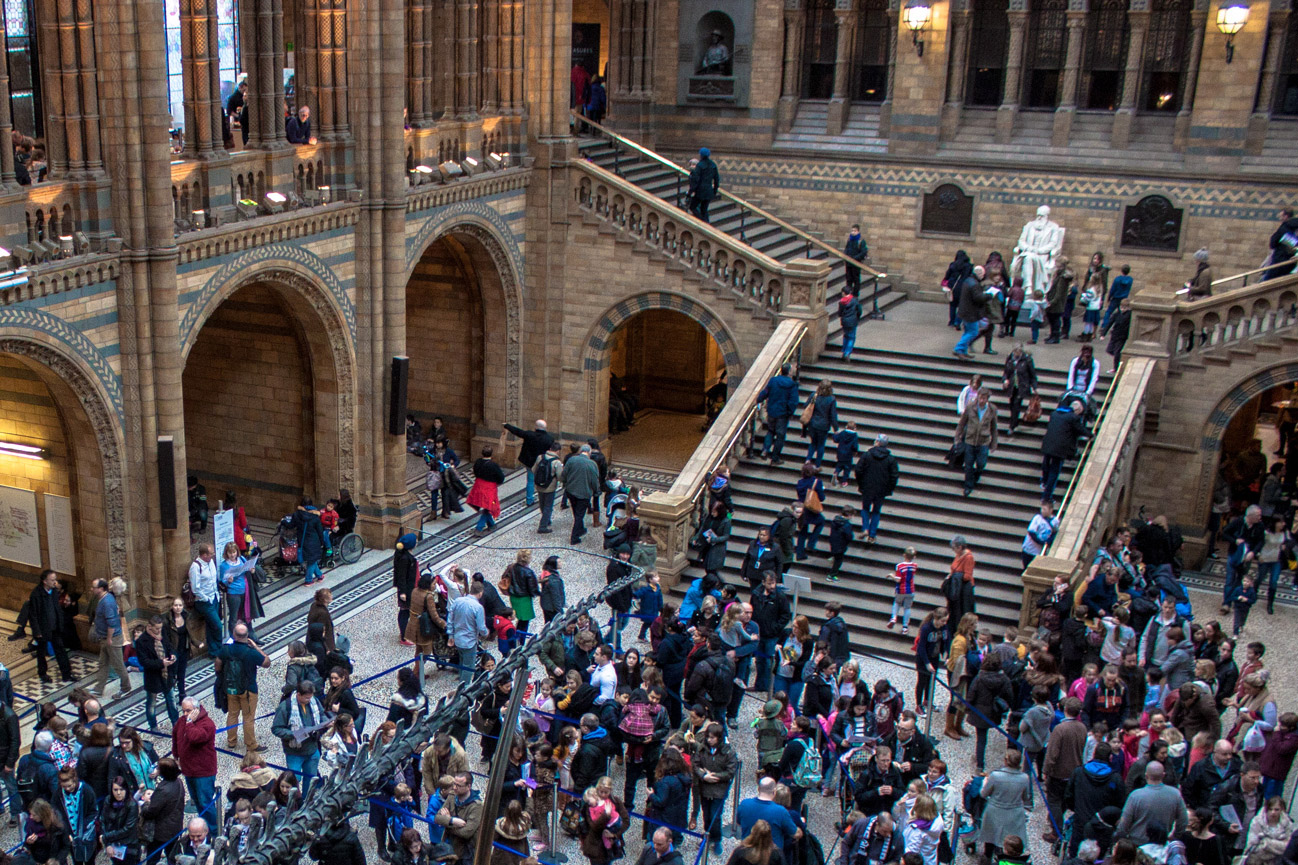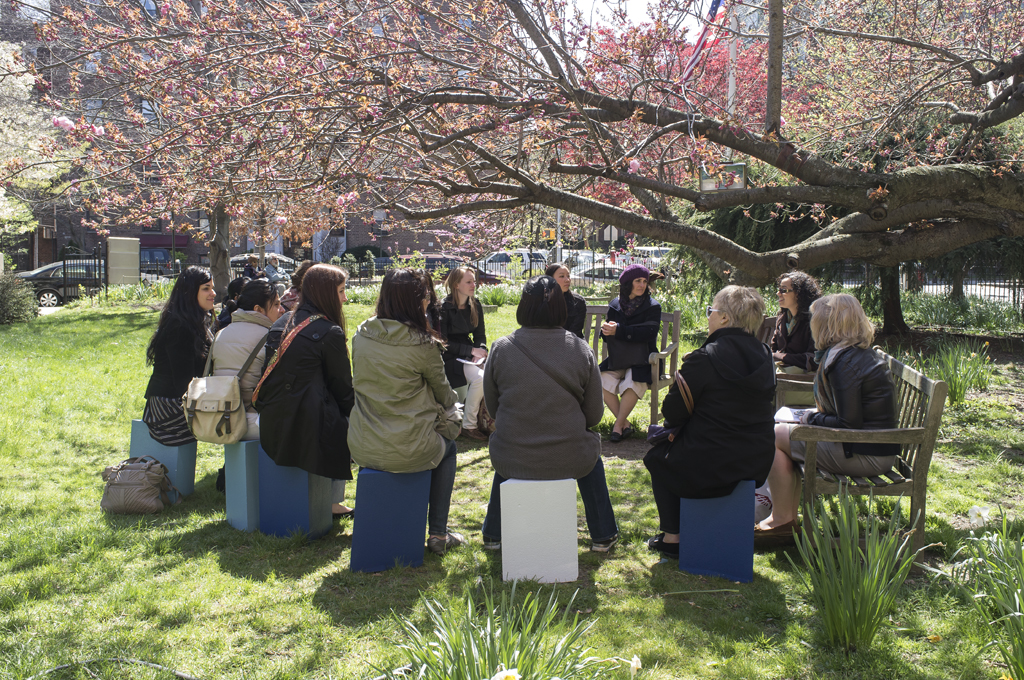Why Cultural Institutions Need to Address Mental Health

A recent study conducted by research institute NORC at the University of Chicago found—well, what we were already feeling—that the present moment is one characterized by lower levels of happiness in the general population and higher levels of isolation, boredom, and irritability. Americans are not feeling optimistic about their futures, and with good reason. The fear of infection, of unknowingly carrying a virus that spreads easily and might kill someone else is obviously, understandably, very stressful. An unpredictable second wave and lockdowns putting people out of work at a rate comparable to the Great Depression is very unsettling.
As our economy and healthcare system buckled under the weight of the pandemic, we witnessed what felt like an unprecedented urgency in making sure that everyone had the resources they needed to be physically healthy, or at the very least COVID-free. Yet, the novel coronavirus, and the measures enacted to reduce its spread, continue to take a toll on people’s mental health. Not only does stress suppress the immune system, making people more susceptible to becoming critically ill, but it also poses its own health risks—including substance abuse, domestic violence, and suicide. Even if a vaccine for the virus were to come tomorrow, the psychological toll of the COVID-19 pandemic will outlast the virus itself. We cannot magically separate the suffering caused by the virus from the simultaneous political, ecological, social, and economic disasters that we are living through.
Perhaps it’s finally time we take the not-so-subtle hint that our culture under-prioritizes health and set change into motion.
As we attempt to open cultural institutions, we must dedicate time and resources to renewing visitor flow protocols and expanding online presence, but shouldn’t this also be the time to rethink how institutions function, what content they provide, and what issues they are committed to addressing? Elaine Heumann Gurian argues in her essay, Threshold Fear, that to be “truly inclusionary… museum[s] must provide services seen by the user as essential, available on-demand, timely, and personally driven.” Taking this into consideration, we should all be asking ourselves what cultural institutions can do to support mental health, because orienting our institutions to better support mental health will be an ongoing, transformative process that requires listening to the public on the issues that most directly impact their daily lives. If promoting mental health becomes a central value of cultural institutions, those institutions will necessarily have to deepen their engagement with the most pressing issues that interact with and contextualize mental health: labor and socioeconomic class, gender and sexuality, disability, racial justice, reproductive justice, environmental justice, and others.
Perhaps it’s finally time we take the not-so-subtle hint that our culture under-prioritizes health and set change into motion. Doing this is no small task, especially when we consider the extent to which anyone’s feelings or ability to cope with their feelings is influenced and affected by their relation to social structures like race, class, and/or gender (Dan Muro describes this with more detail in Mental Health in Context). Many people could benefit from cultural institutions that actively destigmatize and normalize mental health as a topic of conversation, infuse programs and shows with relevant expert knowledge, and facilitate connections to mental health programs and community organizations.

Architecture firm So-IL’s Transhistoria, the third edition of The Guggneheim Museum’s stillspotting nyc;Courtesy of Solomon R. Guggemheim Museum
More cross-collaboration between curators, archivists, social scientists, and mental health experts might engender new strategies for how display and interpret objects, and to forge new connections between disciplines. A complex subject like historical trauma, for example, defies easy categorization, yet it is a subject that, unsurprisingly, often arises when museums seek to reconcile the histories of their collections, particularly American and European museums with African, Asian, and Indigenous art. In order for cultural institutions to be effective and trusted advocates for mental health, they not only need to engage with relevant historical context in a curatorial sense, but also in their own local culture as civic leaders, community centers and employers. It is impossible for an institution to deepen its commitment to mental health in a sustainable and genuine way without also maintaining an equal commitment to the wellbeing and empowerment of women, Black people, Indigenous people, poor people, disabled people, queer people, immigrants, and all people who are systematically denied a base level of peace of mind.
Some cultural institutions around the world are already making progress (see article Museotherapy by Greg Barton), towards more openly incorporating a mental health focus into programming. Cultural programs already provide opportunities for experiences of meaning-making, enjoyment, reflection, immersion, and tranquility, but it is much too soon to rest on our laurels. So often, this work does not progress beyond wellness programs like yoga and meditation in a library or museum atrium.
Museums, libraries, and other cultural institutions are not mental health facilities—nor should they endeavor to be—but what would happen if they resolved to have people on staff whose role in the institution was to bring a mental health perspective into new and existing programs, make interdepartmental connections around mental health, and provide their visitors access to existing local mental health networks?
If cultural institutions deepen their investment in culture by way of robustly supporting mental health, the impact would be unmistakable.
We propose bringing topic-focused staff members, dedicated to promoting mental health issues, into institutions. We were inspired by the now-defunct 100 Resilient Cities project by The Rockefeller Foundation (now known as the Global Resilient Cities Network). In that program, 100 Chief Resiliency Officers were embedded in municipalities around the world to promote climate resiliency-thinking in all aspects of a municipality’s work. In the case of mental health, staffers would work as liaisons between the cultural institution and healthcare providers, as well as with curators and content-makers in other departments to design programs focused on mental health. These staffers would bring focus and nuance to programs and might help prevent the burnout that would likely result from an institution overcommitting to a mental health program for which it isn’t properly resourced.

Flood-resilient recreation area. Image: Bjarke Ingels, courtesy of Rebuild by Design.
We must, of course, recognize that there are limits to what cultural institutions can contribute toward building healthier societies. Most, if not all, of the major issues of our time such as economic marginalization, racism, environmental destruction, and sexual violence are all mental health stressors, and they are deeply rooted in our culture. We do believe, however, that if cultural institutions deepen their investment in culture by way of robustly supporting mental health, the impact would be unmistakable—especially if this were to happen at a scale like the 100 Resilient Cities program intended. Imagine if cultural institutions not only did a better job of supporting local communities with new mental health-centered programming, but did so as part of a synchronized effort around the world?
The institutions of tomorrow will be issue-driven. Gen Z is talking about mental health much more than previous generations, and that fact should not be overlooked. Cultural institutions have an important part to play in building healthier societies, and there’s no better time to start than right now.

David van der Leer, Principal of DVDL, is a consultant, educator, moderator, researcher, strategist, and writer. David’s passion is reinventing the institutions of yesterday—and dreaming up the most inspirational institutions of tomorrow—through excellent architecture and interdisciplinary programs. David founded DVDL in 2018 after having worked and consulted with institutions, government agencies, corporations, and individuals for 15 years. He has extensive experience in bringing together interdisciplinary teams to create successful design projects. David teaches a course called (Re)Programming Museums at Columbia University’s Graduate School of Architecture Planning and Preservation.

Dan is a Brooklyn-based writer, musician, and researcher. He received his B.A. in cultural anthropology from Wesleyan University in 2017, with a focus on development studies and experimental ethnography. He has since worked for cultural and political organizations across New York City such as Van Alen Institute, New York Civil Liberties Union, and Jamaica Center for Arts and Learning.

